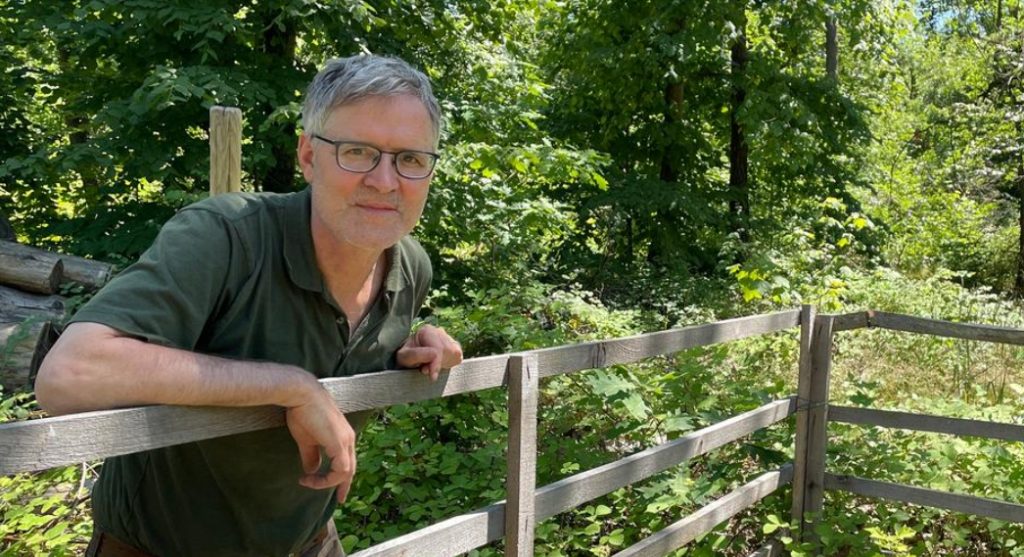The UN is calling for more action in the fight against climate change. But its consequences have long been visible. Heat and periods of drought affected the German forest. Can it be adapted to the changed conditions?
“Danger to life from falling branches and dead trees” reads the sign on the temporary wooden fence at the end of a popular jogging route through the Lenneberg Forest near Mainz. It doesn’t go any further here.

“It would be really negligent to just let the people run free here,” explains forester Stefan Dorschel while walking through his territory. There are several cordoned-off zones like this in the Lennebergwald, 20 hectares are no longer accessible. The trees there are so damaged that they can become dangerous.
The forest area between Mainz, Ingelheim and Budenheim extends over 700 hectares – a green lung in a region with little forest. Hikers, walkers and cyclists are looking for relaxation and tranquility here.
Consequences of climate change
Школьные классы и другие группы все чаще путешествуют по тропам. Forester Dorschel предлагает экскурсии с гидом, демонстрирующие последствия экстремальной засухи. Взгляд часто устремлен вверх, потому что смерть дерева начинается в его кроне. «Если вы хотите увидеть изменение климата, то вы определенно попали в нужное место», — говорит Доршель. Засухи 2018, 2019 и 2020 годов особенно сильно ударили по лесам, что привело к драматическим последствиям.
Pines and beeches are disappearing
One of the special features of the Lennebergwald is that the soil here is particularly sandy. In dry periods, the trees receive even less water than elsewhere because the permeable sandy soil cannot store moisture well. The result: hundreds of decades-old pines have dried up; everywhere in the forest there are open spaces. The Lenneberg forest once consisted of 60 percent pine trees. Today it is no more than 30 percent. “The trend is falling,” adds the forester.
Hundreds of beeches have also died, half of the stock is damaged or dead. “In the beginning it was very difficult for all of us here in the team,” says Dorschel. “Our heart really bled and we suffered totally.”
In the meantime, he and his team have come to terms with the fact that only a few pine trees will survive and that their forest is fundamentally changing. They work every day to ensure that the Lennebergwald survives at all.
BUND: Only every fifth tree is healthy
“The German forest is doing worse than it has been for decades,” says Jörg Nitsch, spokesman for the forest working group at the Federation for the Environment and Nature Conservation (BUND). Since the surveys began, the average crown condition of the forest trees has never been so bad. The crowns of more than a third of the trees are clearly “lightened”. Only every fifth tree in Germany is healthy.
The situation has “deteriorated dramatically,” says Nitsch. Because drought and heat would not only have dried up forests and forest soils, but also made them more vulnerable. Forest fires, storms and pests such as bark beetles and butterflies have caused entire stands of spruce and pine monocultures to collapse.
Adaptation of the forest to climate change
The current report on the state of the forest by the federal government shows that 277,000 hectares of forest in Germany must be reforested – an area slightly larger than Saarland. Experts are therefore opting for a conversion of the forest: away from spruce and pine forests to mixed deciduous forests with native tree species. “Near-natural mixed forests are much more stable and therefore more resistant to climate stress,” explains Nitsch. But for the BUND, the conversion of the forest is going too slowly: “It has to be pushed a lot harder, also by politicians.”
Planting of climate-stable tree species
In the Lennebergwald in Mainz, forest conversion began a few years ago. Forester Dorschel and his employees replant trees in the clear areas. “We plant a lot of different species,” explains Stefan Dorschel, “for example oaks, service berries, lime trees or beeches, and hope that the most robust will then prevail.” Wooden fences protect the new, a few centimeters high, delicate plants from deer and wild boars.
Whether he can save his forest permanently? The forester dares not make any prognosis. He fears more hot summers, which could reduce the tree population even further and also damage the young plants. “In the worst case, our Lenneberg forest will eventually be a steppe landscape,” fears Dorschel. In the best case, robust tree species prevail and adapt to the changed climate, he says: “That would be nice – for all of us.”

